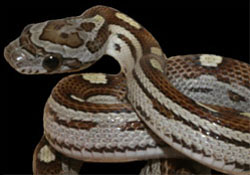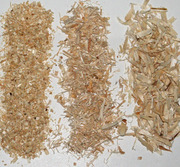Caring For Your Corn Snake

Housing


Corn snakes are good escape artists. Make sure that the cage has a tight fitting lid. For a tank type enclosure, make sure there are no gaps when the lid is closed. Many stores sell “reptile tanks” that latch and also have a place for a lock. I have a few of these tanks, and have really enjoyed them. I don't use a paddlock... but as you can see from the photo, I do bend a wire to use. It helps me know that I've completely shut the cage, and it keeps curious, little fingers from opening it.
Adult corn snakes can be housed in a 20-gallon long (30"L X 12"W X 13"H) or larger size tank. It’s best to get a smaller enclosure for a hatchling. A five or ten gallon tank work great. If you decide to house your hatchling in a larger tank, just add some extra hides and water dishes. You just want to make sure that your little one feels comfortable with lots of places to hide. Another suggestion is to place the water dishes along the edge of the tank, so they can be easily found while your snake is cruising around.
Substrate
Substrate is the medium or material used in the housing. Most keepers and breeders recommend sani-chips or aspen (fine shred or regular both work great). These substrates can be found at most pet stores, are absorbent and do not contain oils that are toxic to snakes. I've used both aspen and sani-chips. These substrates work great and are easy to spot-clean. You don't need to completely change the substrate every week. When you see a soiled area, use a paper towel to pick up the mess/surrounding substrate and throw it away. It's as simple as that, and makes cleaning up after your corn snake really easy.
Newspaper is also another acceptable substrate. It may not look as “natural” as other materials, but it is inexpensive and convenient. There are some substrates that should not be used. Although pine shavings are readily available at most pet stores, they should NOT be used. They contain toxic oils that can harm your corn snake (especially when it gets in the drinking water). Reptile sand is another substrate that should NOT be used. It can get in your snake's nostrils and can cause impaction problems when ingested.